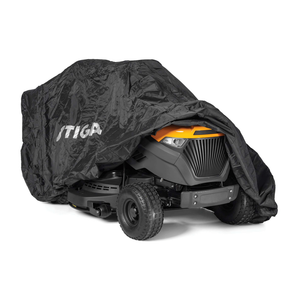The ‘non-driven’ Aerator cartridge permeates the soil with small holes which allows air, water and nutrients to pass through more easily to the grassroots. This is beneficial as this helps the roots grow more deeply, meaning a healthier, thicker and more luscious lawn.
The Aerator also removes soil compaction and helps water move into the soil profile. Soil that is compacted has too many solid particles, which can prevent the soil from absorbing what it needs to flourish. Aerating your lawn stops the roots from being starved as there is nothing blocking that process.
Aerating your lawn involves making small holes in the soil to allow water, air, and nutrients to reach the grass roots. This can be beneficial for several reasons:
Improved soil health: Aeration helps to break up compacted soil, which can improve drainage and allow air and water to reach the roots more easily. This can help to encourage healthy grass growth. Compacted soil can cause flooding as the water cannot pass through.
Enhanced nutrient absorption: Aeration can help to improve the absorption of nutrients, such as fertilisers, by allowing them to reach the roots more easily.
Reduced thatch build-up: Thatch is a layer of dead grass and other organic material that can build up on the surface of the soil. Over time, this can prevent water and nutrients from reaching the roots, leading to unhealthy grass. Aeration can help to reduce thatch build-up by breaking it up and allowing it to decompose.
Improved stress tolerance: Aeration can help to improve the stress tolerance of grass, making it more resilient to drought, foot traffic, and other stressors.
Enhanced appearance: A well-aerated lawn is typically more lush and green, as the grass is able to access the nutrients and water it needs to thrive.
Factors such as soil type, grass type, and the amount of foot traffic the lawn receives can all affect the need for aeration. In general, it's a good idea to aerate your lawn every month with the Allett aerator cartridge.
This cartridge will only penetrate up to 5mm deep and is not an aggressive aeration tool.
You may want to do a more aggressive aeration practice such as coring once a year- ideally in the spring.































